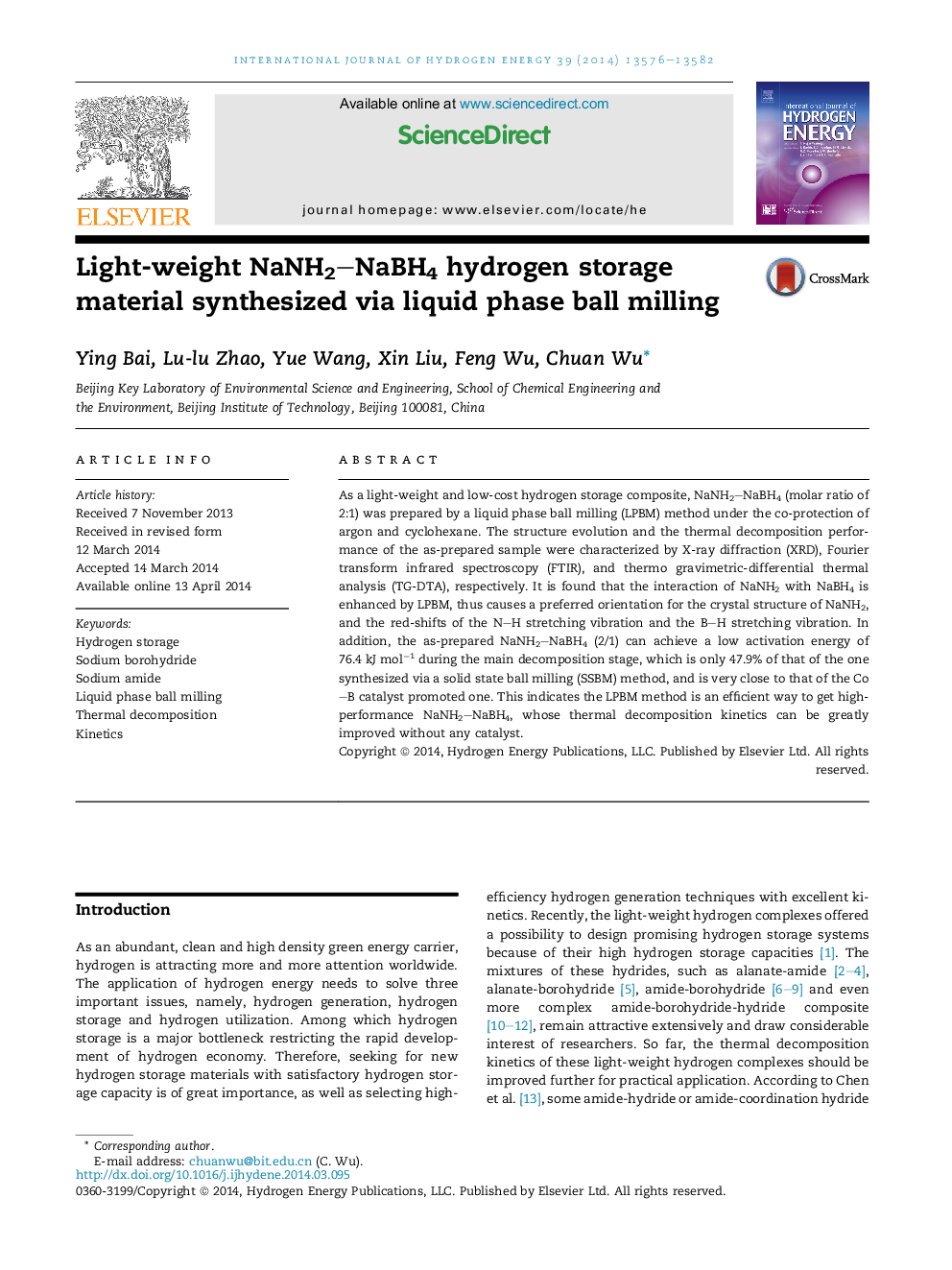| Article ID | Journal | Published Year | Pages | File Type |
|---|---|---|---|---|
| 1272657 | International Journal of Hydrogen Energy | 2014 | 7 Pages |
•NaNH2–NaBH4 composite is prepared via a liquid-phase ball milling method.•The thermal decomposition activation energy of the sample is only 76.4 kJ mol−1.•The thermal decomposition kinetics is greatly improved without any catalyst.•The multi-effect function of liquid-phase ball milling method is discussed.
As a light-weight and low-cost hydrogen storage composite, NaNH2–NaBH4 (molar ratio of 2:1) was prepared by a liquid phase ball milling (LPBM) method under the co-protection of argon and cyclohexane. The structure evolution and the thermal decomposition performance of the as-prepared sample were characterized by X-ray diffraction (XRD), Fourier transform infrared spectroscopy (FTIR), and thermo gravimetric-differential thermal analysis (TG-DTA), respectively. It is found that the interaction of NaNH2 with NaBH4 is enhanced by LPBM, thus causes a preferred orientation for the crystal structure of NaNH2, and the red-shifts of the N–H stretching vibration and the B–H stretching vibration. In addition, the as-prepared NaNH2–NaBH4 (2/1) can achieve a low activation energy of 76.4 kJ mol−1 during the main decomposition stage, which is only 47.9% of that of the one synthesized via a solid state ball milling (SSBM) method, and is very close to that of the Co–B catalyst promoted one. This indicates the LPBM method is an efficient way to get high-performance NaNH2–NaBH4, whose thermal decomposition kinetics can be greatly improved without any catalyst.
